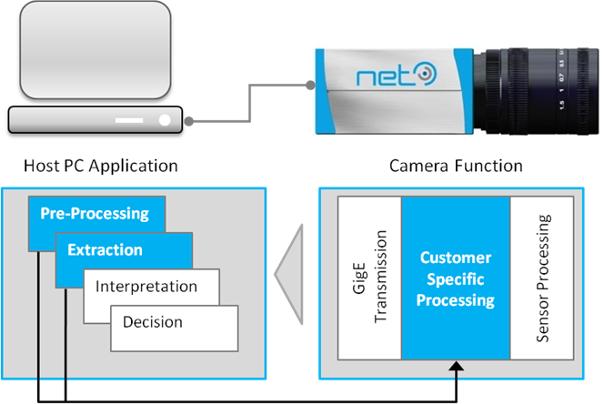
Optimize your applications with image pre-processing - know-how for users
Ideal machine vision results are achieved when images can be clearly interpreted by either humans or computers. Only then can
image processing be considered a success. The key success factor is the ability to highlight the useful information contained in the
image. Image pre-processing plays a major role when it comes to making the relevant information usable for the user. In this
context, image normalization refers to the stage of the image enhancement process in which results can be made comparable by
standardizing specific features (e.g. by restricting the brightness or grayscale range). This process greatly enhances the ability to
clearly establish whether something is “good” or “bad”, conforms to the specified dimensions or is in the right position. Below,
we would like to show users of digital image processing just how much additional potential can be created for their applications
through image pre-processing.
1. Image pre-processing provides always an advantage as no optical image is perfect.
Information that is not contained in the image cannot be made visible and “read out” later. Inhibitors in such cases include the
ambient lighting conditions, discoloration and optical distortions caused by the combined effects of lighting, optics and camera.
However, digital image pre-processing can always be used to successfully enhance the image content or to extract specific
features from relevant image regions.
Image pre-processing identifies image imperfections and provides the ability to “edit out” these defects whereby enabling
reliable decisions to be made and important information to be “made visible”, ultimately enhancing the image content.
2. Image pre-processing in the camera conserves resources and provides increased efficiency.
Real-time image processing is a prerequisite to achieve the shortest possible production and inspection cycles. The length of time
available for image processing is directly limited by the machine cycle time, requiring high computational demands on existing
systems. Even powerful computers can reach their limits very quickly when dealing with complicated applications. By using lowcost
FPGAs (Field Programmable Gate Array) in the camera, even complex algorithms can be processed in real-time. Thereby, the
camera produces the optimized result.
Costly computing resources can be avoided completely or freed up for other purposes by shifting the image processing
task from the computer to the camera. At the same time, the fastest tasks can now be completed in real- time.
3. Industry 4.0 users benefit from image pre-processing in the camera.
The shift from centralized/non-interlinked system architectures to industry 4.0 underlines the necessity for innovative ideas in
industrial image processing. The goal is to create decentralized, interlinked application architectures that have a high level of
standardized hardware and software. The seamless integration of cameras via the GigE Vision and USB3 Vision interface, and the
stable acquisition and enhancement of reproducible image sequences onboard, make it possible to develop image processing
systems that are ideal for the future.
Compact, GentTL/GenIcam-compatible cameras can be easily integrated into interlinked system architectures. Cameraintegrated
image pre-processing enables individual image processing solutions that are continuously extendable and can
be easily integrated with no additional effort.
4. The Open Camera concept enables the system integrator to provide the best possible application solutions.
Specific tasks require customized image processing solutions. NET’s Open Camera concept now enables system integrators and
machine builders to individually configure cameras themselves. So-called IP Cores can be protected directly in the camera and
sensitive image data can be encrypted using proprietary algorithms created by the system manufacturer.
Camera-integrated image pre-processing supported by the Open Camera concept provides a competitive advantage for
users who want to be sure that their know-how is successfully implemented but protected as well.
|
